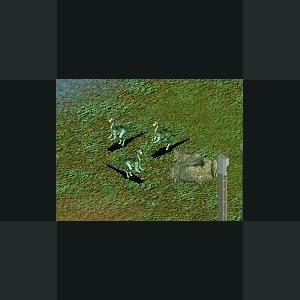About This File
Dryosaurus
Dryosaurus (DRY-oh-sawr-us) meaning 'oak lizard', due to the vague oak shape of its cheek teeth (Greek dryo meaning 'oak' and sauros meaning 'lizard') was a genus of an ornithopod dinosaur that lived in the Late Jurassic Period. It was an iguanodont (formerly classified as a hypsilophodont). Fossils have been found in the western United States and Tanzania and were first discovered in the late 19th century. The Tanzanian site proved to be an especially fertile hunting ground for Dryosaurus fossils, this specimen was previously called Dysalotosaurus (Lost wood reptile). An expedition led by German paleontologist Werner Janensch found a great many fossils that represented Dryosaurus at all stages of development.
Dryosaurus had a long neck, long, slender legs and a long, stiff tail. Its 'arms', however, with five 'fingers' on each 'hand', were short. It was about 8 to 14 feet (2.4 to 4.3 m) long, five feet (1.5 m) tall (at the hips) and weighed 170 to 200 pounds (77 to 91 kg). Its eyes were quite large, leading many to believe that it possessed excellent eyesight.
Dryosaurus had a horny beak and cheek teeth and, like other ornithopods, was a herbivore. Some scientists suggest that it had cheek-like structures to prevent the loss of food while the animal processed it in the mouth. It was probably a herd animal, which raised and protected its young after hatching.
A quick and agile runner with strong legs, Dryosaurus used its stiff tail as a counter-balance. It probably relied on its speed as a main defense against carnivorous dinosaurs.
Its intelligence, as measured by its brain-to-body ratio, was midway when compared to other dinosaurs.



Recommended Comments
There are no comments to display.
Create an account or sign in to comment
You need to be a member in order to leave a comment
Create an account
Sign up for a new account in our community. It's easy!
Register a new accountSign in
Already have an account? Sign in here.
Sign In Now